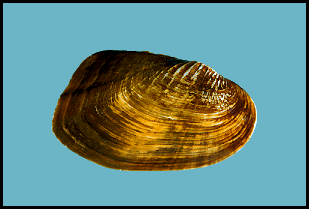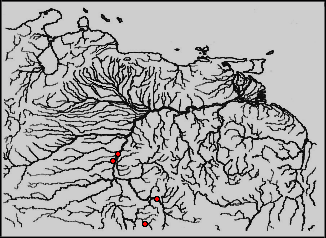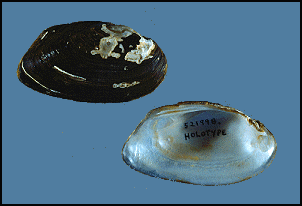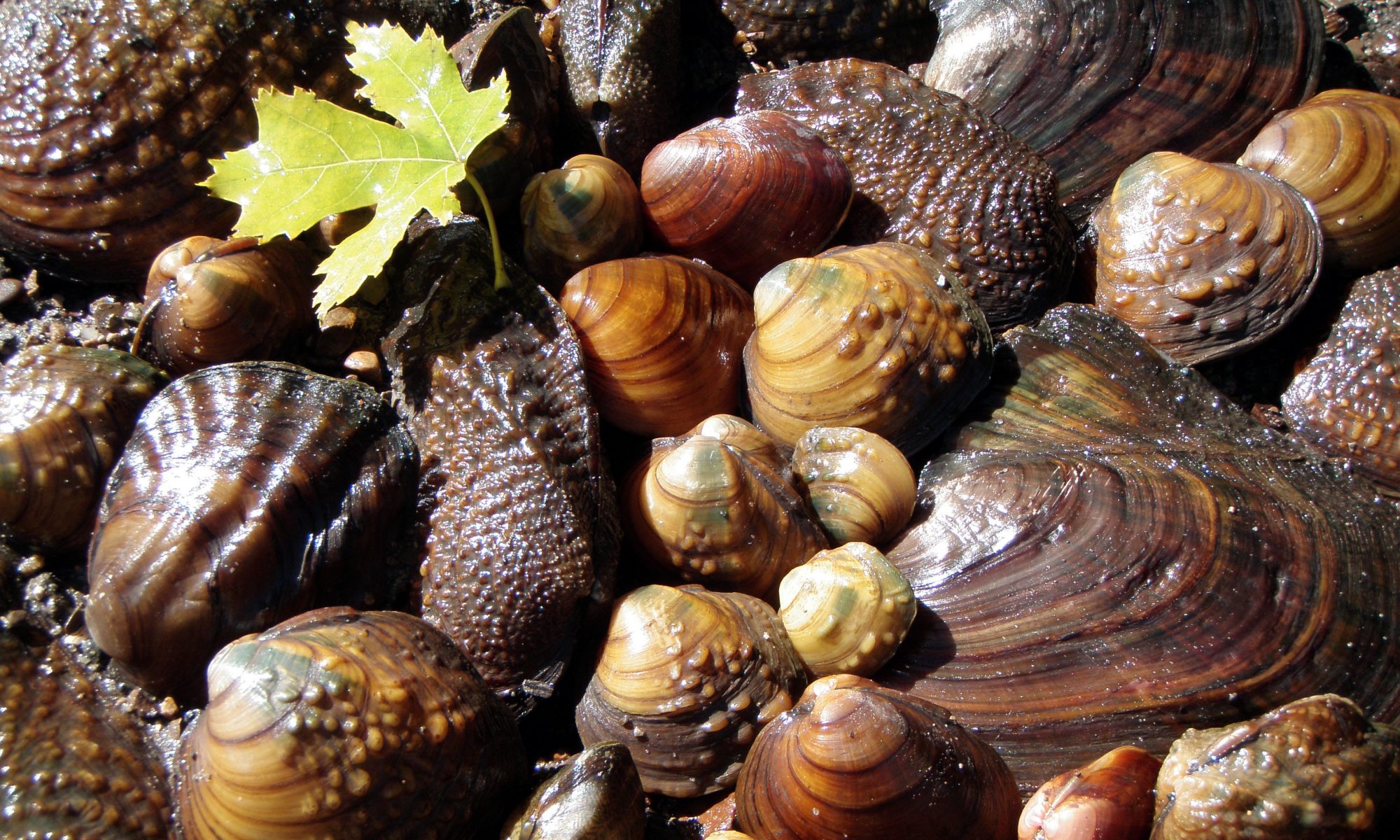Morrison, 1943

Rio Siapa (Caño Casiquaire- Rio Negro Dr.)
Territorio Federal Amazonas, Venezuela.

Original Description: Diplodon flucki Morrison, J.P.E. 1943. Two new Orinoco unionids, with notes on Unio granadensis Lea and U. patulus Lea. Nautilus. 57(1):14-16 + 2 plates.
Type Locality: Orinoco River, above Munduapo, [Amazonas] Venezuela.

Holotype: USNM 521998.
Paratypes: USNM 521999 (2). MCZ 167994 (4).
Synonymy:
- Diplodon (Diplodon) flucki Morrison, 1943
- Haas 1966:518.
Diplodon flucki Morrison, 1943
- Parodiz 1968:5.
Description: “Shell of medium size, subsolid, elongate-rhomboid to long elliptical, inflated; posterior ridge rounded or biangulate, ending posteriorly in a biangualte point a little above the base line; anterior end regularly rounded; dorsal line slightly arched; ventral margin slightly curved; the posterior end obliquely truncate, meeting the base line at the post basal biangulation; epidermis olivaceous. Beaks little inflated, radially sculptured with very delicate, pinched up ridges, minute and curved downward anteriorly, more distant and straight medially, and striking divaricate at a 45 degree angle just above the posterior ridge posteriorly; the beak sculpture extends only over the umbonal portion of the shell, up to a length of about 15 mm. Sculpture finely concentrically striate, with minute traces of of radially sculpture over the disc. Hinge teeth distinctive, the hinge line narrow, pseudocardinals lameller, compressed, two in each valve, the (upper) anterior one in the right valve small, thin, low; the posterior long, high, and triangular; the anterior one in the left valve low, long, and triangular; the posterior high, triangular, being practically a portion of the interdentum. The two high triangular posterior pseudocardinals fit into depressions in the hinge line opposite, so that the ventral aspect of the hinge line is zigzag in this part. Nacre white, beautifully iridescent; the cicatrices are moderately deep, the posterior confluent, the anterior deeper, with the anterior retractor a deep, distinct pit on the bottom of the pseudocardinal buttress. Dorsal muscle scars a plainly marked diagonal row in the middle of the shallow cavities of the beaks.
The holotype, USNM 521998, was collected from the Orinoco River above Mundapo, Venezuela, and measures: Length, 52.3 mm., height 28.3 mm., diameter, 22.6 mm. One of two paratypes, USNM. No. 521999, exhibits almost perfect (uneroded) beaks sculpture; it is a young shell only 26 mm. in length.
The finely concentrically striate sculpture, with traces of radial sculpture, and the peculiarly zigzag hinge line produced by the meshing of the thin, high, triangular pseudocardinals, indicates a relationship with D. suavidicus (Lea) from the Amazon Basin. It differs from that species in being more elongate, a little more inflated and more pointed behind. The beak sculpture of D. flucki (fig. 5) differs from that of D. suavidicusin the straightness of the medial ridges, not converging; and the more definitely clean-cut divaricate wrinkles on the posterior slope; also the fine anterior riblets are straight in suavidicus, regularly curved downward in flucki.” (Morrison, 1943:14-15).
Range: Upper Orinoco River in Venezuela and Columbia.
Comments: This is one of only three species of Diplodon known from the Orinoco River drainage (one undescribed). Only seven specimens of D. flucki are known (all are types). It is known only from a short stretch of the Orinoco River proper in Amazonas, Venezuela. This is a remote part of Venezuela and very little mollusk collecting has been done in this part of the world. Parodiz (1968:5) stated that D. flucki was related toD.suavidicus (=rhombeus) from the Amazon River, Brazil, but that it was larger, elongated and more solid. He also stated that this is a “northernmost isolated species”.
Specimens Examined: USNM 521998 (Holotype). Orinoco River, above Munduapo, [Amazonas], Venezuela [5 February 1899]. [G.K. Cherrie]. MCZ 167994 (4 Paratopotypes). Orinoco River, above Munduapo, [Amazonas], Venezuela. 5 February 1899. G.K. Cherrie. USNM 521999 (2 Paratypes). Orinoco River, Maipures, [Amazonas], Colombia [Venezuela]. [March], [1899]. [G.K. Cherrie].
Other Diplodontini in the area. Diplodon pazi (Hildago, 1868). Range: Imbabura, Ecuador. Diplodon suavidicus (Lea, 1856). Range: Amazon.

